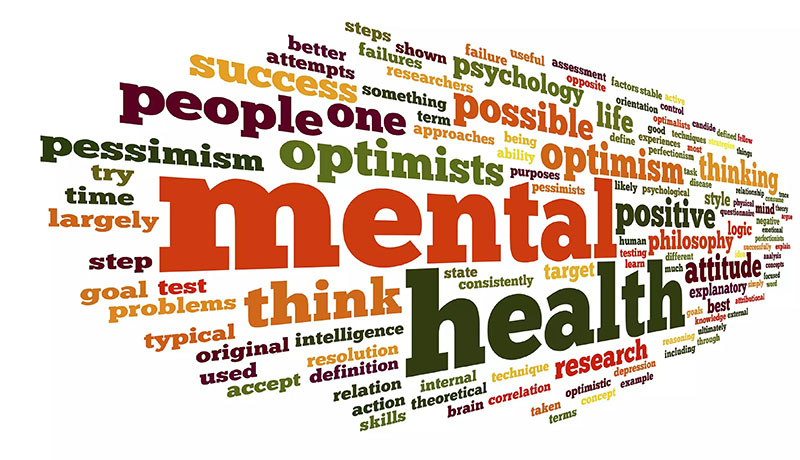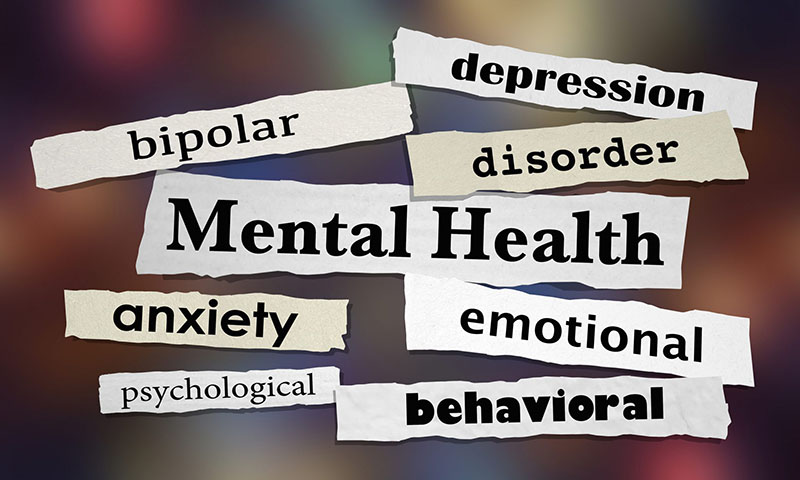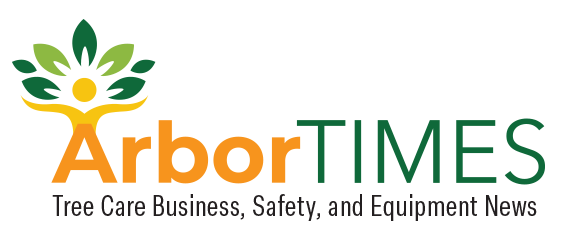Care for One Another Like You Care for the Trees

The tree care industry isn’t alone with the high risk of safety accidents on the job. Any operation with heavy machinery, working long days in the early morning or late at night and relying on the power of nature and weather is prone to incidents. Although a focus on technical and physical checks, like PPE and operational training, is vital to safety, there is a crucial aspect that is often missing from the conversation—mental health.
Mental health challenges can partly or wholly cause accidents on the job. Vice versa, incidents in the tree care industry can also create mental health challenges like trauma, substance use issues or anxiety. Unfortunately, most businesses are not prioritizing these discussions, let alone creating a safe space without repercussions of job loss or ostracization.
As a certified Adult Mental Health First Aid (AMHFA) USA instructor, who has worked in the ski industry for eight years, I’ve observed and trained ski patrollers, snowcat and loader operators, lift mechanics and more. For the tree care industry, I see three main areas to step up its game, increase the safety of its employees and reduce insurance claims.
Proactive checks and routines
Navigating through a mental health challenge is difficult enough on its own, and it can lead to secondary effects – job loss, relationships ending (with family, friends, colleagues or partners) or negative coping mechanisms, like a substance use challenge. In a precarious industry like tree care, we must also recognize injuries or death as potential secondary effects of a mental health challenge. So, how can one help during early intervention or worsening signs and symptoms to prevent these secondary effects?
Mental health must be as default and mandatory as all the other safety checks before and during the job. If your crew already reviews a safety checklist, make sure to also include a mental health check. See what feels comfortable for the staff, or ask a mental health professional for guidance. We don’t need to use “mental health” if it feels too vulnerable and uncomfortable. Find a “safe word” that is approachable. OneWave International opens conversations for people “doing it tough” at their Fluro Fridays. Another company that has simplified the query is “R U OK?”
I interviewed Danny Prout—a tree climber with 10 years working around the world, from the UK to New Zealand and Canada—who explains that the industry is “quite competitive,” filled with “masculine personalities,” all there to prove themselves. He elaborated that “people get themselves in situations where they are biting off more than they can chew and on a job above their experience level. With experience, you learn to know when you can or cannot show up.”
Prout shares that, in his experience, “all near misses have been in a place of stress, tiredness or personal problems,” where one was “distracted and not focused.” His advice to a younger or newer arborist is to be aware if you’re ever in “check-out mode” (imagine a clerk at a supermarket scanning items, zoned out in routine). “If you ever find yourself in that mental space for even a few minutes, something will likely happen. Tree care is not a job where a single day can be like that.” When he observes himself in this headspace, he chooses to stay on the ground by saying, “I can’t today because of personal reasons.”

A frequently asked question during an AMHFA course is what to do when you’re worried about an individual but don’t feel it’s appropriate to talk to them one-on-one. The National Alliance on Mental Health says, “eight out of 10 workers with a mental health condition list shame and stigma as factors that prevent them from seeking care.” So, I always recommend utilizing weekly or daily meetings because if one person would benefit from the resources or information, chances are everyone would. Sharing with the whole team removes the discomfort of singling someone out, reduces stigma within your team and makes the leader running meetings more approachable regarding mental health.
Topics should range from common signs and symptoms of mental health challenges (ex. distancing from friends and family) to resources that could help (ex. peer support groups). Reflect on recent experiences on the job, in the industry or in similar job functions. Reports provide data on how many tree care workers are killed every year. As heartbreaking as such reports can be, they can be used as examples to discuss how mental health might have been a cause or effect.
Reactive conversations and resources
In AMHFA, a traumatic event is defined as, “any incident experienced by a person that is perceived to be dangerous and threatens serious injury or death.” Ring any bells? Prout shares detailed stories of the near misses and severe injuries that he has experienced and how they were treated as “just another day” by those around him. Even after losing a portion of his finger on a simple pruning job—which he says was a prime example of a day he was in “check-out mode”—one colleague laughed while saying, “you’ll never do that again!”
Another example was when a 200-foot tree fell inches from where Prout was—100 feet up in another tree, while he clung to life strategically on the one side of the trunk that kept him safe— referred to as a near miss, and that was that. Trauma is a risk factor for nearly all mental health issues; therefore, after such an event, one is more at risk for depression, substance use, anxiety, and even crisis situations. Yet, he also shares, “over my ten years in the tree care industry, not one person has ever provided me a resource for mental health.” Prout expressed that your mental health can be even more adversely affected when you hurt someone else. Therefore, we must also keep an eye on and support the person who almost caused a serious injury or death.
Outside of doctor’s appointments or reviews with the client, companies working in tree care need a post-incident process regarding mental health. These near misses on the job are risk factors for the mental health challenges that stick with your employee and lead to severe injury or death for themselves or others on the next work site. In turn, this leads to huge insurance claims for your company, monumental impacts on your employee’s family, and increased anxiety or grief for your other employees.

Since not everyone on your team is trained on AMHFA, encouraging appropriate professional help (one of the five steps of the ALGEE Action Plan) might be the most beneficial. This means suggesting options—a therapist, counselor or check-in with their primary care doctor. Recognize barriers—stigma, cost, time, transportation. How can you, or someone on your team, help this person navigate these barriers to access the professional help they need?
Offering to drive someone to an appointment, covering a shift so they can attend or babysitting kids are common ways to help. When a company offers a few free therapy sessions through an Employee Assistance Program (EAP), employees—who would have never otherwise felt comfortable seeing a therapist—make an appointment. No cost means low risk when one’s hesitant to try something new.
Ongoing support following a traumatic event is crucial. First, those around the person in need must pay attention to signs and symptoms. Negative coping mechanisms, like drinking alcohol or overworking, are common. They might also sink into a recluse-like state, where you rarely see them at work or other usual meetups. These scenarios call for a straightforward follow-up: checking in on this person. Utilize “I” statements: I’ve noticed you’ve missed a lot of work lately. Ask open-ended questions: How have you been feeling the last few weeks? And choose an environment that is semi-private and comfortable.
A top-down shift in culture
When there is a shift in culture at a company, I typically witness entry-level employees taking the time for education, finding resources and supporting colleagues. However, when a manager becomes certified in AMHFA, or simply treats mental health as an essential consideration for their team, a long-lasting impact occurs.
These managers recognize that if an employee’s mental health is suffering, so will their work performance, and in turn, so will the manager’s work performance. Moreover, poor mental health increases turnover. Lastly, in an industry with the potential for physical accidents, as we’ve discussed, this can also mean more insurance claims, which never bodes well for anyone in leadership.
Statements like, “I can’t be here today,” to completely step away from the job or “I can’t be climbing today,” to modify one’s role and reduce the risk for themselves and others, should be welcomed by a crew leader. They need to send a message to the rest of the team that this is a sign of a strong and intelligent employee.
Until then, many workers will not feel comfortable being honest with their headspace or might not recognize they aren’t in the best mindset for the job. Prout reflects on the countless times he has asked, “You okay, man?” over his decade in the industry; he was trying to think of a time when someone responded, “no” and couldn’t think of an example. Given the current culture in tree care, he explains that people are often thrown off when he asks this question. This is normal in all occupations, not just for arborists. Be prepared that someone might not be ready to open up right away. Prout always follows up with a, “Well, you know where I am if you need me”—a perfect example of keeping lines of communication open, and not pressuring before they are ready to share or you have built the necessary trust.
Another technique I’ve seen prove successful is talking about therapy, support groups and any other mental health care appointments as regularly and nonchalantly as any other. Although therapy is not for everyone navigating a mental health challenge, Prout vehemently recommends it. “I was one of those people who were scared to do that at the beginning, but now I love therapy. It’s not weird, it’s not weak, and it can be fun. Don’t fear it. Welcome it!”
Prout is also a backcountry guide. Working in two very high-risk and unique industries, he recognizes that people often won’t seek help because no therapist, counselor or doctor can understand their experiences. The Reside Foundation provides a helpline for river rafting guides to call when struggling with their mental health. The Iverson Foundation for Active Awareness, provides music therapy, yoga and resources specific to first responders. These are both industries with a history of the same, “toughest of the tough, work hard, play hard mentality.” And yet, these organizations are stepping up to invest time and resources because they recognize that the trauma, PTSD, anxiety and depression that come from the job are not sustainable without support.
Where is such an organization for the tree care industry? Imagine the benefits of a phone line one could call where on the other end are people who have, or still do, work in tree care. Or a cohort of therapists with an understanding and empathy for the experiences of tree care workers.
This is the tree care industry, folks! As a worker, you observe, assess, and respond with what’s best for the tree and the surrounding environment. It’s time to put as much care into colleagues, employees and yourself as we put into the trees!
Danny Prout owns and operates The Arbor Culture Tree Service @the_arbor_culture.
Natasha Buffo is a community mental health facilitator and creative non-fiction writer. She teaches Adult Mental Health First Aid to outdoor professionals and recreationists. Her most recently published works are with Adventures in Good Company, Recreation.gov, Fleet Feet, and GearJunkie. When not at her desk, you’ll find Natasha snowboarding near Lake Tahoe, cycling across states, kayaking alpine lakes, backpacking unpopular trails or walking her new puppy. Learn more: www.dirtandtears.com.
